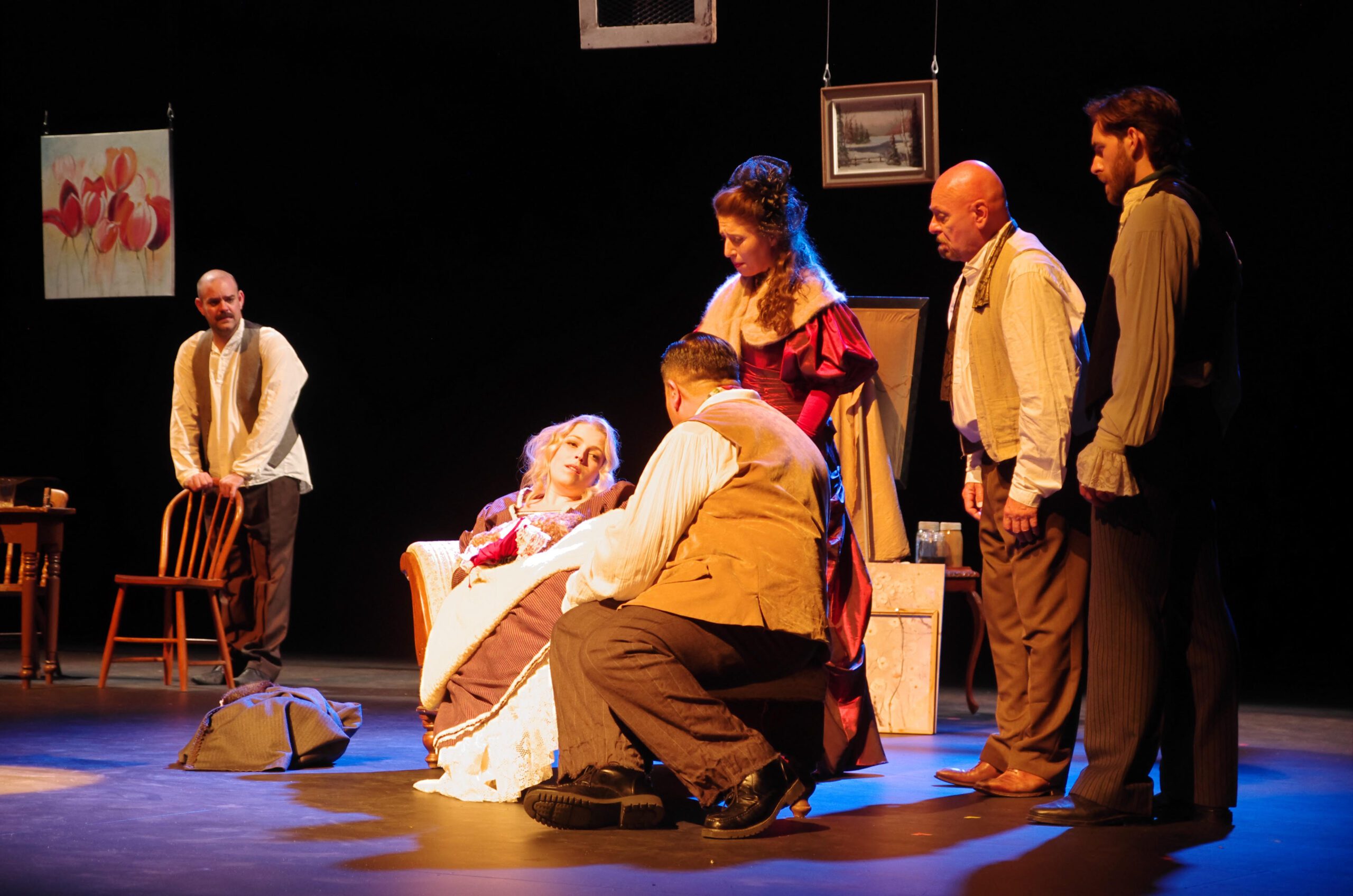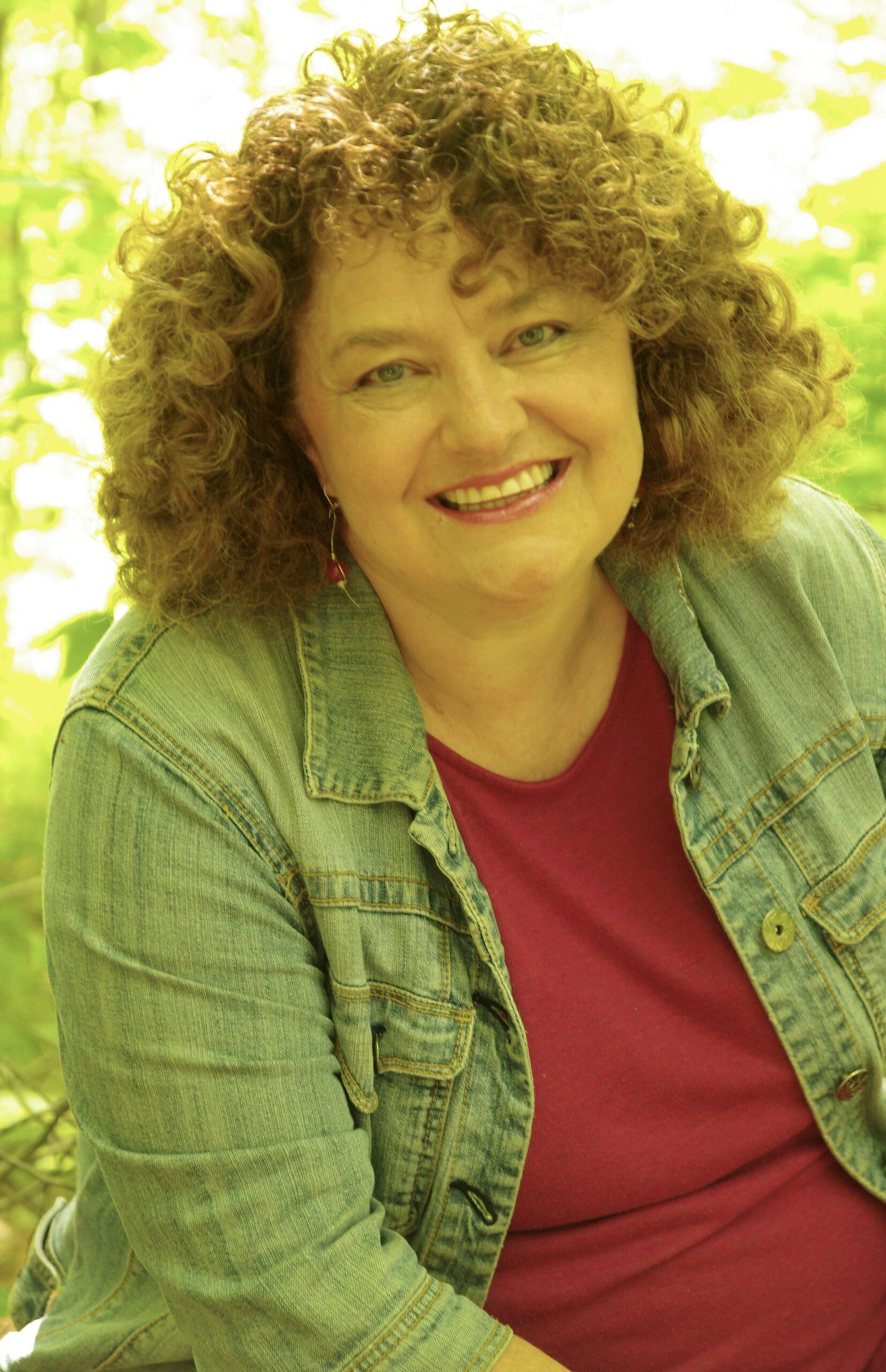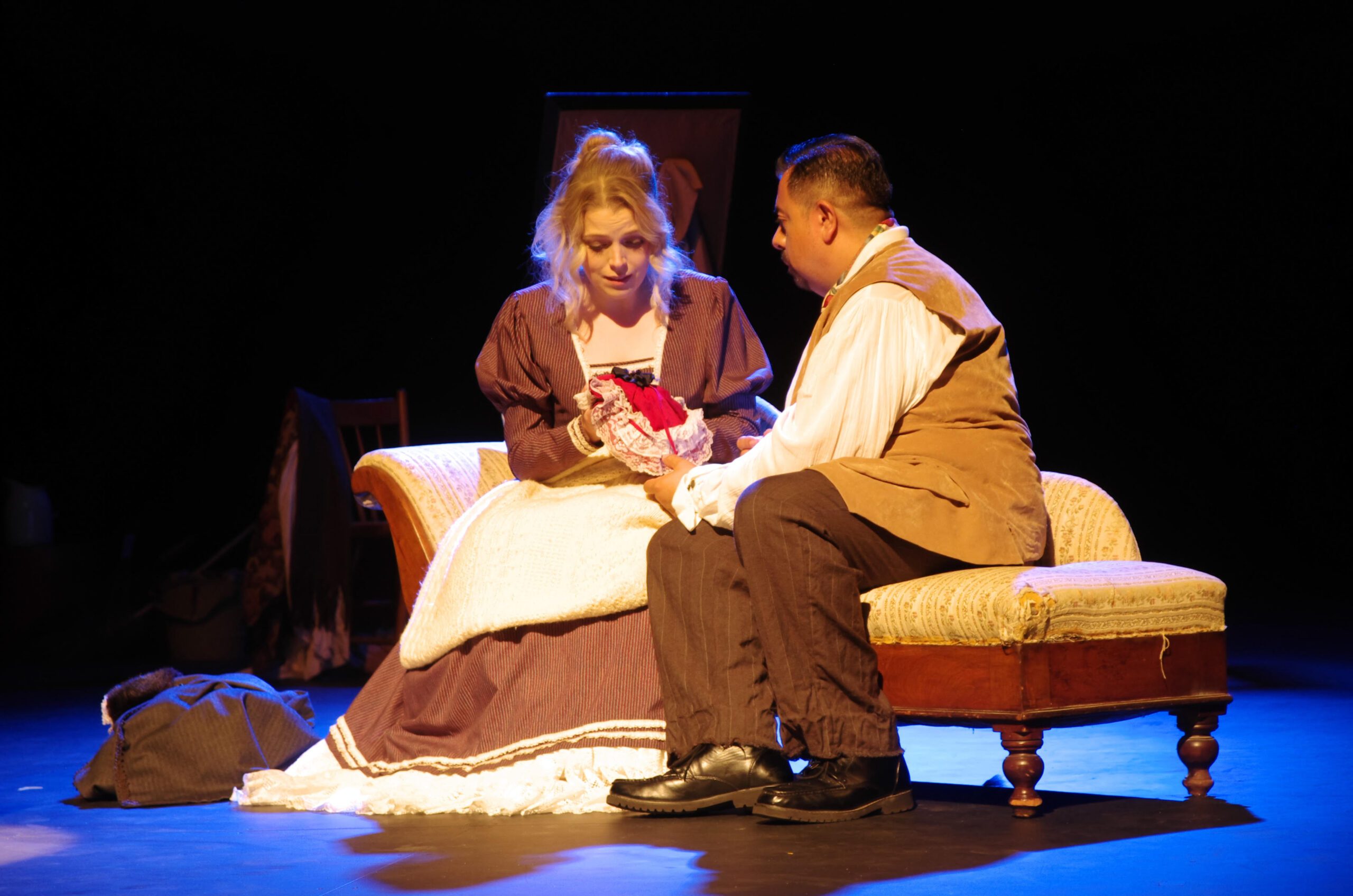Southern Ontario Lyric Opera (SOLO) opened their 2024-2025 season on October 2nd at the Burlington Performing Arts Centre with Puccini’s La bohème. Founder, artistic director and conductor Sabatino Vacca knows what audiences want: operatic warhorses familiar to the audience, featuring performances by new artists about to lift off in their careers. Judging from the enthusiastic roar of the crowd when Vacca took his final bow, his formula is working.
Laura Nielsen was a completely convincing Mimì; she looked amazingly like the famous Grisette sculpture by Descomps on the Canal St-Martin in Paris. Vocally, Nielsen was outstanding, using her pianissimos to full effect to show the fragility of Mimì, while also bringing out her character’s suffering with a strong upper register. Nielsen is a skilled actress, and this debut in her first fully staged Bohème is a harbinger of Mimìs to come.
But an effective La bohème is not built on Mimì alone and, as in the sitcom Friends, a strong ensemble makes for a good show. SOLO regular Romulo Delgado was an empathetic and tender Rodolfo whose final duet with Mimì was heartbreakingly poignant. His vocal strength grew throughout the opera until his final plaintive cries of “Mimì” filled the hall with anguished resonance. Michael Robert-Broder was a well-acted and vocally powerful Marcello. Whether playing the best friend, the jilted lover or the passionate artist, Robert-Broder seamlessly used his rich tones and solid dramatic skills to bring depth to his role. Again, it was hard to believe that this was a young singer premiering a role.
Also making her Bohème debut was Amelia Daigle as Musetta. Daigle had a sparkling stage presence and her vocal fireworks made her “Quando m’en vo” a showstopper, but she also used her warm undertones in the final act to convince us that she was, after all, a tart with a heart. She and Robert-Broder had good onstage chemistry, effectively bringing comedy and palpable sexual tension to the performance.
Douglas Tranquada added panache and humour as Schaunard, while Austin Larusson reprised his 2017 SOLO role as Benoit and Alcindoro, playing the befuddled characters who were blissfully unaware of their surroundings. Newcomer Luke Noftall was a striking Colline, who not only looked the part but was a skilled comedian during the garret antics. His “Vecchia zimarra, senti” was sensitively performed, and showed a chillingly controlled use of vocal dynamics. During intermissions, patrons were overheard looking at their programs, wanting to know more about who this Colline was. Kudos, as well, to John Darrigo who was a vocally bright Parpignol and to the young soloist Khloe Kalman who was part of the delightful children’s chorus. The adult chorus was effective in every scene, including during the tricky timings in Act 3.

Photo Credit: John Martens
The final scene in Southern Ontario Lyric Opera’s production of La bohème
The orchestra, however, was problematic. There were overall pitch problems, but the string section sounded lush during key arias, while the woodwinds were particularly effective in the opening introduction and in the marching segments of Act 2. Siobhan Kerr’s harp was especially beautiful. The weakest link in the 43-piece orchestra was in the brass section, particularly the trumpets. Pitch problems and inaccuracies in the first trumpet part were jarring and drew attention away from some lovely playing by the entire ensemble. This is not a reflection of Vacca’s sensitive and skilled conducting, but rather an indication of the different skill sets he works with.
Despite the extreme financial constraints faced by a regional company, Pamela Blackwood-Marques – the costumes, props and assistant set designer – continues to raise the bar for SOLO productions. Director Gregory Finney’s expertise in musical theatre was apparent in his creative use of tableaus and interesting new takes on old scenes – in particular the Cabaret-like line up of the quarrelling lovers in the third act. Some of his scene plotting could be potentially problematic in ensemble work, but his crowd scenes were dynamic and less linear than those in his last season’s SOLO directorial debut of Carmen. His comedic flare shone through with the male garret scenes, contributing to something often overlooked in La bohème; the opera is a romance and a bromance.
Do I go to SOLO expecting to see the overall calibre of a Met production which is supported by a US$300 million annual budget? Obviously not. That would be ludicrous. There are missed notes, the occasional historically questionable costume and a quirky mix of semi-professional and professional artists. What I do expect from any opera production is good storytelling and music that embodies the librettist’s and composer’s original vision. When I saw people walking out of this Bohème with tears in their eyes after witnessing Mimì’s death, I knew I had been at a production that would have pleased Puccini himself.
Opera Canada depends on the generous contributions of its supporters to bring readers outstanding, in-depth coverage of opera in Canada and beyond. Please consider subscribing or donating today.

Dawn Martens received a 2010 Ruby Award for opera education, as well as a 2020 Governor General’s History Award for Excellence in Teaching for an online children’s production of Brundibar. A writer for Opera Canada for over 20 years, she is currently the host of Opera Night in Canada on 100.9 Canoe FM.










